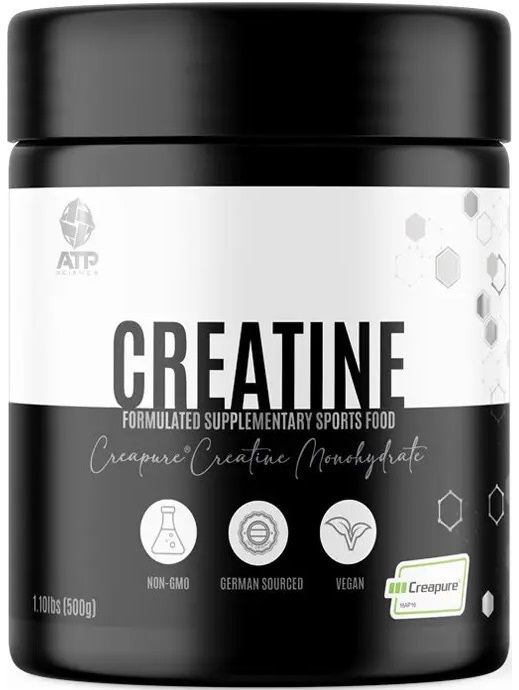
ATP Science Creatine Monohydrate Creapure

ATP Science Creatine Monohydrate Creapure
Creatine and more specifically Creapure® has so many amazing benefits for the body outside of its ability to improve muscle growth. It also touts the ability to improve cognitive function and has been proven to be effective in the speed of processing for both memory and intellect too!
Creapure® is considered the gold standard of Creatine available to the market and we think the Germans have absolutely nailed it hence why ATP Science gives you access to 100% Creapure® in our product, no fillers or nasties and is free from any banned substances!

The satellite cell-muscle growth effect
Satellite cells are precursor cells for muscle cells (skeletal muscles) and high intensity training (such as weights) can boost satellite cell numbers and thus boost muscle cell numbers. Skeletal muscle is a form of striated muscle tissue, accounting for ∼40% of adult human body weight.
Skeletal muscle is composed of multinucleated contractile muscle cells (also called myofibers). During development, myofibers are formed by fusion of mesoderm progenitors called myoblasts. In neonatal/juvenile stages, the number of myofibers remains constant, but each myofiber grows in size by fusion of satellite cells, a population of postnatal muscle stem cells.
Adult mammalian skeletal muscle is stable under normal conditions, with only sporadic fusion of satellite cells to compensate for muscle turnover caused by daily wear and tear. However, skeletal muscle has a remarkable ability to regenerate after injury. Responding to injury, skeletal muscle undergoes a highly orchestrated degeneration and regenerative process that takes place at the tissue, cellular, and molecular levels.
This results in the reformation of innervated, vascularized contractile muscle apparatuses. This regeneration process greatly relies on the dynamic interplay between satellite cells and their environment (stem cell niche).1

Creatine Monohydrate and muscle growth
Studies have concluded that there is an increase in muscle following resistance exercise training with creatine monohydrate administration in older adults.2 We have also previously reported that older adults show a significant increase in total muscle creatine following four months of creatine monohydrate supplementation at 5g per day.
An increase in satellite cell number occurs in older adults in response to resistance exercise training, and creatine monohydrate has been shown to enhance satellite cell activation during resistance exercise training in younger men.3 Together, the aforementioned data found that creatine monohydrate may enhance the resistance exercise induced activation of satellite cells and contribute to the increase in muscle mass seen a well-designed study.4
The increase in muscle mass was due to creatine monohydrate given that the potentiation of the muscle gains seen in the research were similar to those previously reported studies using creatine monohydrate as a muscle stimulating agent.
How Creatine works in the muscles
Creatine is a substance found in muscle that combines with phosphate to form creatine phosphate. Creatine phosphate reacts with adenosine di-phosphate to regenerate adenosine tri-phosphate (ATP – stored energy) in working muscle.
Dietary supplementation of creatine may increase the total creatine and creatine phosphate content of the muscle. Researchers have found that muscle creatine phosphate levels drop significantly after the performance of a 300 meter run, which lasts 30 to 40 s suggesting that the lack of creatine phosphate may somehow limit performance during intense, short term exercise.5
Thus, buffering of ATP by phosphocreatine extends the duration of activity possible and increasing creatine enhances endurance.
INGREDIENTS: 100% Pharmaceutical Grade Creapure® Creatine Monohdyrate.


